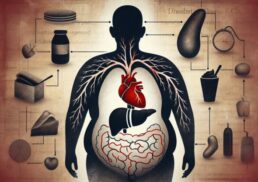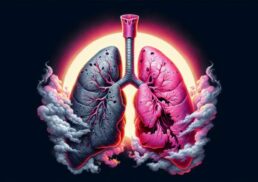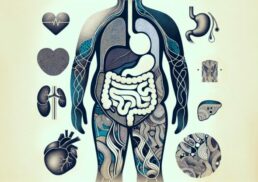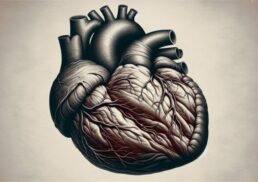Urinary retention can be a frustrating and painful experience that impacts daily life. Whether it’s the sudden inability to urinate or the gradual struggle to empty the bladder completely, understanding the causes, symptoms, and treatment options is crucial. This blog post will guide you through the complex world of urinary retention, providing valuable insights and practical advice for managing this condition.
Table of Contents
Key Takeaways
Understanding urinary retention involves recognizing acute and chronic symptoms, common causes, risk factors and complications.
Diagnosis requires a physical examination as well as various tests to identify the underlying cause of the condition.
Treatment options include bladder drainage techniques, medications and surgical interventions. Lifestyle changes can also help manage symptoms for improved quality of life.
Understanding Acute and Chronic Urinary Retention
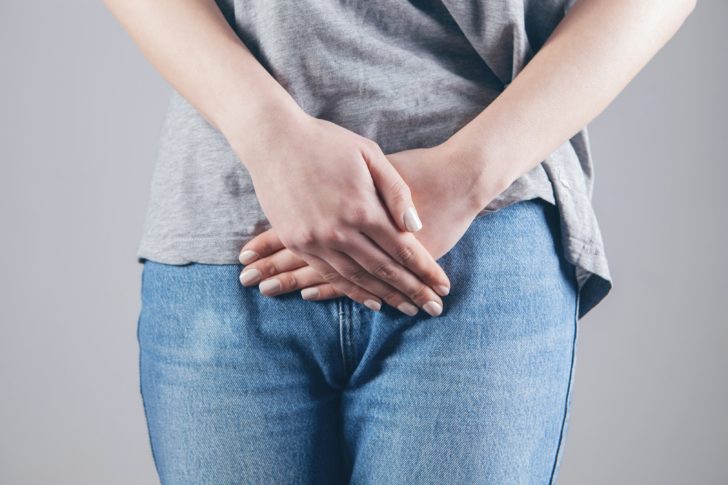
Urinary retention can manifest in two forms: acute and chronic. Acute urinary retention is an abrupt inability to urinate that requires immediate medical attention. This sudden onset can be caused by various factors, such as postoperative urinary retention after surgery. On the other hand, chronic urinary retention develops slowly, with a progressive incapacity to evacuate the bladder completely. Both conditions can present with lower urinary tract symptoms and may be linked to infections in the urinary tract.
Understanding the contrast between acute and chronic urinary retention is vital, given that the former calls for immediate medical intervention, while the latter might remain undetected for a while. In either case, understanding the underlying causes, such as digestive and kidney diseases, and seeking appropriate treatment can help alleviate symptoms and improve overall quality of life.
Acute Urinary Retention
Acute urinary retention is characterized by a sudden inability to urinate, resulting in pain and discomfort. Immediate medical attention becomes a necessity in such cases, as not treating acute urinary retention promptly can result in grave complications. The risk of developing this condition increases with age and certain medical conditions. Treatment for acute urinary retention typically involves emptying the bladder with a catheter, which may need to remain in place for an extended period. In some instances, addressing the underlying cause, such as prostate cancer, may require further treatment.
Identifying the symptoms of acute urinary retention, that involve a sudden inability to urinate or only being able to pass very limited amounts of urine, is a crucial step. Prompt medical care can help alleviate the pain and discomfort associated with this condition and prevent more severe complications.
Chronic Urinary Retention
Chronic urinary retention is a more insidious condition, defined by a gradual inability to completely void the bladder. This can affect overall bladder function and may lead to complications if left untreated. Urinary retention in adults can be caused by various factors that contribute to the development of chronic urinary retention, including:
Stroke
Diabetes
Multiple sclerosis
Trauma to the spine or pelvis
Diagnosing chronic urinary retention typically involves a combination of physical examination, medical history review, and diagnostic tests such as ultrasound, uroflowmetry, cystoscopy, and post-void residual urine measurement. Early detection and appropriate treatment can help prevent complications and improve bladder function.
Common Causes of Urinary Retention
The most common causes of urinary retention include an enlarged prostate gland, urethral stricture, and neurogenic bladder dysfunction. Each of these causes can result in a range of symptoms and complications.
Gaining insight into the root causes of urinary retention can assist in tailoring the right treatment and management strategies.
Benign Prostatic Hyperplasia (BPH)
Benign Prostatic Hyperplasia (BPH) is a common condition in older men, characterized by the enlargement of the prostate gland. BPH is associated with urinary retention, as the enlarged prostate can obstruct the flow of urine and prevent the bladder from being fully emptied. The prevalence of BPH in men aged 50 and above ranges from 8% to 60% at age 90 years.
Indications of BPH include:
frequent or pressing need to urinate
difficulty initiating urination
weak urine stream
dribbling after urination
increased nighttime urination
Early identification and treatment of BPH can thwart complications and enhance the quality of life for men coping with urinary retention.
Urethral Stricture
Urethral stricture refers to the narrowing of the urethra, which can obstruct urine flow and lead to urinary retention. This condition can be caused by:
Chronic inflammation
Injury, trauma or pelvic fracture
Bacterial urethritis
Complications stemming from medical procedures
Urethral stricture can contribute to urinary retention by narrowing the urethra and obstructing the flow of urine, preventing the bladder from being fully emptied. In severe cases, it can result in:
Urinary backup
Urinary tract infections
Enlarged bladder
Kidney problems
Diagnosis typically involves tests to evaluate urine flow and assess for urethral narrowing.
Neurogenic Bladder Dysfunction
Neurogenic bladder dysfunction occurs when nerve signals between the bladder and brain are disrupted, leading to a lack of control over the bladder. This disruption can result in urinary retention, as individuals are unable to completely empty their bladders. Nerve injuries that can potentially result in neurogenic bladder dysfunction include diseases such as multiple sclerosis, Parkinson’s disease, and diabetes, as well as spinal cord injuries and accidents that cause harm to the brain or spinal cord.
Infections can also bring about neurogenic bladder dysfunction by impacting the nerves and muscles involved in bladder control. The infection can lead to inflammation and damage to the nerves, disrupting the normal signals between the bladder and the brain. This can result in difficulties with bladder emptying and control, leading to urinary retention or incontinence.
Identifying Symptoms and Signs of Urinary Retention
Spotting the signs and symptoms of urinary retention early can help ensure timely treatment and reduce the risk of complications. Some common indications of urinary retention include:
The sensation of an incompletely emptied bladder following urination
An urgent need to urinate despite the passage of a large volume of liquid
A weakened flow of urine
Initial symptoms of urinary retention may include:
Intense abdominal pain
Inability to urinate
Sensation of fullness in the abdomen
Weak dribble or flow of urine
If you notice any of these symptoms, consult with a healthcare professional for proper evaluation and management.
Diagnosing Urinary Retention
Diagnosing urinary retention involves a bladder scan, physical examination, and additional tests to determine the underlying cause. A bladder scan measures the amount of urine in the bladder, allowing healthcare professionals to assess the condition of the bladder and detect any potential obstructions.
Physical examinations can also aid in diagnosing urinary retention by evaluating bladder distention and conducting a tap test on the lower abdomen. This information, combined with other diagnostic tests such as urine and blood tests, imaging tests, and electromyography, can help identify the cause of urinary retention and guide appropriate treatment.
Treatment Options for Urinary Retention
Treatment options for urinary retention depend on the underlying cause and may include bladder drainage techniques, medications, and surgical interventions. These treatments aim to alleviate symptoms, improve bladder function, and address any complications that may arise from urinary retention.
Bladder Drainage Techniques
Bladder drainage techniques, such as catheterization, can help relieve acute urinary retention and manage chronic cases. Catheterization involves inserting a tube into the bladder to facilitate the drainage of urine. While this technique can provide immediate relief, prolonged catheterization may lead to infections, bladder stones, and damage to the urethra.
Changing catheters multiple times daily is necessary to ward off complications. Furthermore, individuals with urinary retention should consult with a healthcare professional to learn how to properly utilize a catheter in a domestic setting.
Medications
Medications can be an effective treatment option for addressing the underlying cause of urinary retention. For instance, alpha blockers can help manage urinary retention caused by an enlarged prostate gland by relaxing the smooth muscle cells in the prostate and enhancing urinary symptoms.
Examples of alpha blockers used for treating urinary retention caused by an enlarged prostate include:
Tamsulosin
Alfuzosin
Doxazosin
Prazosin
Terazosin
However, certain medications can also cause muscle weakness or interfere with the internal sphincter, leading to urinary retention. Discussing any potential medication side effects with a healthcare professional is of utmost importance.
Surgical Interventions
In severe cases of urinary retention or when other treatments are ineffective, surgical interventions may be necessary. Common surgical procedures include transurethral resection of the prostate (TURP), colposuspension, and slings.
A TURP involves removing a section of the prostate gland through the urethra without the need for incisions. Urethral stricture surgery, on the other hand, removes or repairs scar tissue or blockages in the urinary tract, treating the narrowing of the urethra and improving urine flow.
Surgical interventions have been demonstrated to be efficacious in treating urinary retention and providing long-term solutions for patients.
Learn more, visit Treatment of Urinary Retention. How do health care professionals treat urinary retention?.
Risk Factors and Prevention Strategies
Urinary retention risk factors include:
Age: Individuals aged 50 and over, particularly males, are more susceptible to this condition
Gender: Women are more likely to experience stress urinary incontinence
Diet: Maintaining a balanced diet by avoiding processed foods, saturated fats, and excessive calories can help reduce the risk of urinary retention.
Urinary retention prevention is possible through lifestyle changes and regular medical evaluations. Limiting the consumption of bladder irritants, such as caffeine and alcohol, and engaging in regular physical activity can help reduce the risk of urinary retention. Regular medical check-ups can also help identify any potential underlying conditions that could be causing urinary retention, allowing for early intervention and treatment.
Complications Associated with Urinary Retention
If left untreated, urinary retention can lead to complications such as:
Bladder damage, which can occur from the retrograde flow of urine into the kidneys, resulting in kidney damage or scarring
Kidney damage
Urinary tract infections, as stagnant urine in the bladder can encourage bacterial growth
Other complications associated with urinary retention include:
High blood pressure
Pain
Shock
Kidney failure
Sweating
Anxiety
Hematuria
Hypotension
Postobstructive diuresis
Swift treatment and management of urinary retention can help avert these complications and enhance overall well-being.
Living with Urinary Retention
Managing urinary retention symptoms can involve:
Lifestyle changes
Seeking medical help
Eliminating bladder irritants from one’s diet
Controlling fluid intake
Exercising regularly
Pelvic floor muscle exercises, also known as Kegel exercises
These measures can help treat urinary retention, alleviate symptoms as acute urinary retention increases, and prevent individuals from starting to develop urinary retention. With proper care, urinary retention treated effectively can significantly improve patients’ quality of life.
Leading a healthy lifestyle and reaching out for medical help when required can substantially enhance the quality of life for individuals coping with urinary retention. Regular medical check-ups and appropriate treatment can help enhance bladder performance, reduce discomfort, and prevent further complications.
Summary
Urinary retention can significantly impact daily life and well-being. Understanding the differences between acute and chronic urinary retention, recognizing the symptoms and causes, and seeking appropriate treatment are essential steps to managing this condition. By implementing lifestyle changes, engaging in regular medical check-ups, and exploring various treatment options, individuals living with urinary retention can improve their quality of life and minimize the risk of complications.
Frequently Asked Questions
What is the cause of urinary retention?
The most common cause of urinary retention is benign prostatic hyperplasia (BPH), when the prostate gland is enlarged and the bladder wall is thickened. Other causes include obstruction or stricture, weak muscles around the bladder, certain medications, dehydration, and constipation.
How do you fix urinary retention?
Treatment for urinary retention typically involves draining the bladder, taking medication, performing medical procedures or devices, and making lifestyle changes. In addition, surgery to repair or strengthen the bladder, catheterization, urethral dilation, and stents may also be used to manage urine retention.
What are signs of urinary retention?
Signs of urinary retention include difficulty starting to urinate, inability to fully empty the bladder, increased abdominal pressure, loss of small amounts of urine during the day, and the feeling of needing to urinate despite having already finished.
Does urinary retention go away on its own?
Urinary retention caused by temporary factors such as medication or anesthesia may go away on its own, but any prolonged or recurring symptoms should be examined by a doctor. Acute urinary retention usually resolves by itself, while obstructive causes may require surgical intervention.
Why can’t i pee?
Urinary retention is typically caused by a blockage in the urethra or an issue with bladder muscle control, which can be due to diabetes, stroke, multiple sclerosis, brain or spinal cord infections, pelvic injury, medications, or nerve issues. This can result in weakened urine stream, pain and fullness in the abdomen, leakage, and difficulty holding urine in.
